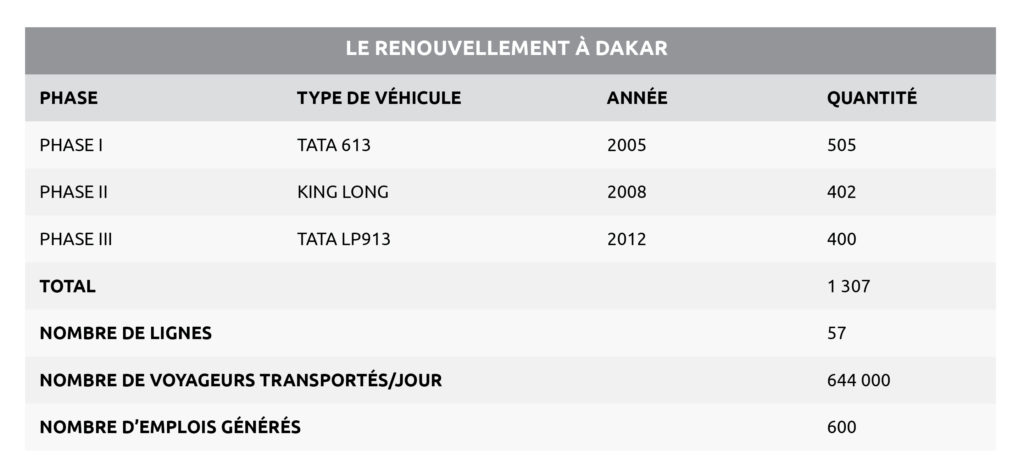Since 2005, the state of Senegal has undertaken a vast fleet renewal programme in Dakar to modernise urban transport and professionalise the stakeholders.[1] The objective is to improve the safety, comfort, efficiency, accessibility and environmental quality of urban mobility. The renewal of the fleet started with the “cars rapides” and the “ndiaga ndiaye” which had become very old. Out of a total of 3000 “cars rapides” and “ndiaga ndiaye“, 1607 have so far been renewed in three phases. As a result, the option is taken to renew tranches of 400 to 600 vehicles at a time.
While the Conseil Exécutif des Transports Urbains de Dakar (executive council of urban transport of Dakar) initially turned to the Indian industrialist TATA for the first phase of renewal in 2005, it then entrusted the second phase to the Chinese manufacturer King Long, whose offer seemed more attractive and better suited to fulfil the expectations for new generation buses in 2008. Not being dependent on a single vehicle manufacturer therefore allows greater flexibility, which is essential for ensuring that the offer is in keeping with user expectations. Given the risk of “a technological delay” emerging between two renewal phases, the next phase will compensate for this delay because the renewal is linear.
[1]http://www.cetud.sn/index.php/modernisation-des-transports-urbains/renouvellement/dakar.html
